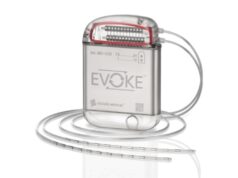
High-frequency spinal cord stimulation (HF-SCS) for treating chronic refractory low back pain (CRLBP) may be associated with a significant decrease in total healthcare costs, offsetting device acquisition costs within 27 months, according to a recent analysis published in Neuromodulation: Technology at the Neural Interface.
Shivanand Lad (Duke University Medical Center, Durham, USA) and colleagues, who conducted this analysis based around large claims data on the cost of HF-SCS, also note that “as advances in neuromodulation expand therapy options for patients, it will be important to understand their financial implications”.
At the outset of their report, Lad and colleagues posit that—while HF-SCS is a new advance in neuromodulation that may be effective in treating CRLBP patients—the cost burden of this therapy is “yet undetermined”.
Using IBM MarketScan databases, the researchers retrospectively identified patients who had undergone HF-SCS implantation between 2016 and 2019 in the USA. Those with low back pain diagnosis, but without history of surgery, were included in the cohort. Cost data, including inpatient and outpatient service, medication, and out-of-pocket costs, were collected at six months before HF-SCS implantation, and at one, three and six months after implantation. The explant rate within those six months was also evaluated.
A total of 119 patients met the analysis’ inclusion criteria, Lad and colleagues detail. The majority (73.1%) were female and owned commercial insurance (83.2%), and the median age across the final CRLBP cohort was 54 years. Common comorbidities included inflammatory arthritis (22.7%), depression (26.1%), hypertension (44.5%) and obesity (26.1%).
In the six months before HF-SCS implantation, patients incurred median total costs of US$15,766, whereas the post-implant median total cost excluding device acquisition was US$398 at one month, US$2,569 at three months, and US$5,840 at six months.
The authors report that, therefore, the average reduction in total cost was US$6,914 (95% confidence interval [CI]: US$588–US$12,458, p<0.001). The median total acquisition cost was US$43,586, with most of this coming from outpatient services. And, of 88 patients with six-month continuous enrolment, two (2.3%) underwent a device explant.
This study was hindered by the inherent limitations of conducting retrospective studies using large commercial databases, Lad and colleagues concede, as well as its relatively small sample size and lack of generalisability outside of the US healthcare system. They go on to note that, owing to costs not being included for control groups—such as CRLBP patients who did not receive SCS—future trials involving HF-SCS for CRLBP should include a more specific focus on CRLBP-related costs, in order to corroborate their results and address comparisons in costs more definitively.
“Furthermore, combination of cost data with quality-of-life data in such studies may shed light on the cost-effectiveness of HF-SCS,” they state.
“HF-SCS is associated with a statistically significant decrease in total healthcare costs and with reductions in out-of-pocket costs for patients. As the USA struggles with exorbitant healthcare spending, HF-SCS is potentially a treatment option that may reduce costs in patients with CRLBP.”










